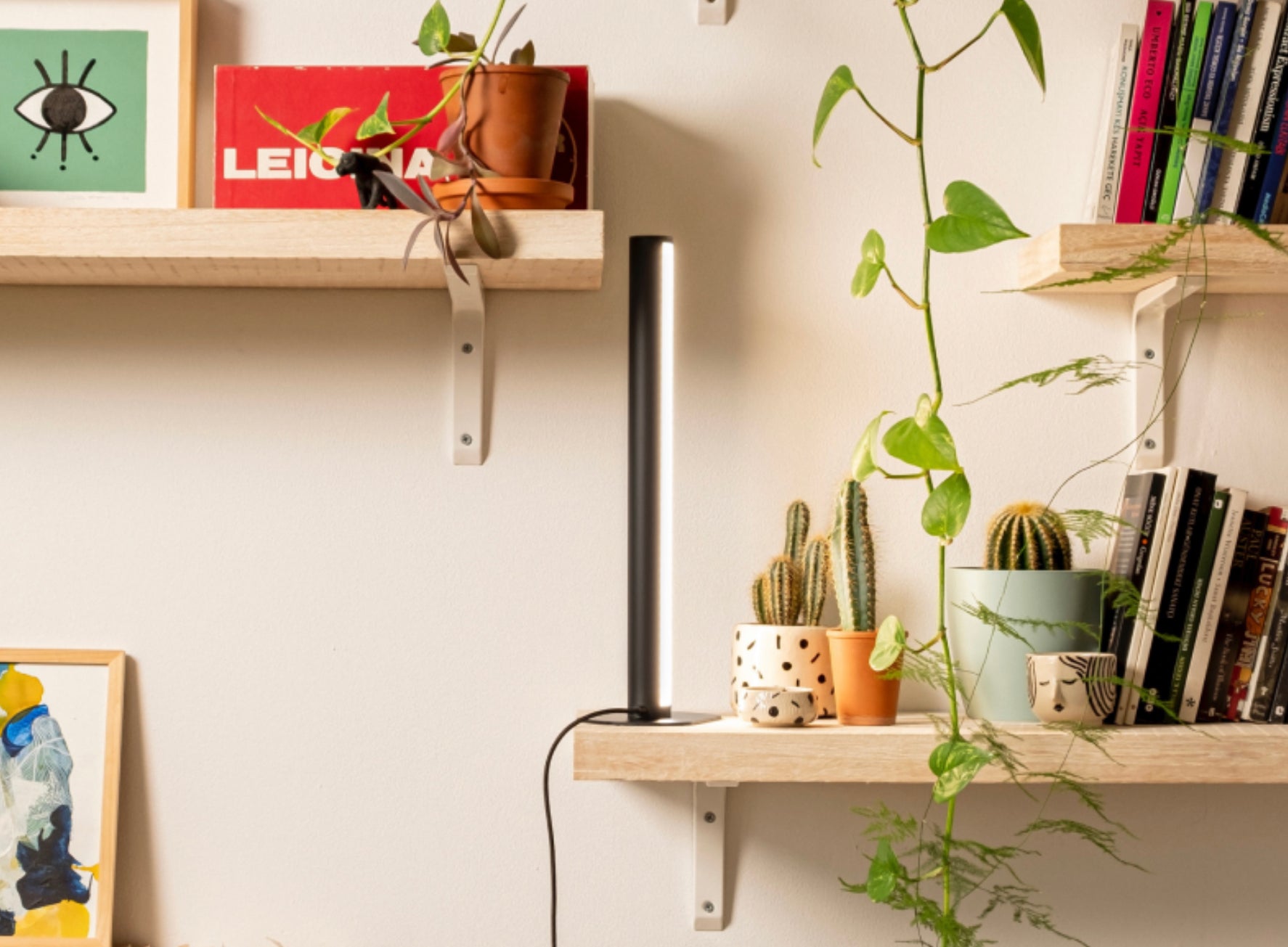Short days, long nights
Now that the days are getting shorter and the nights longer, you may be wondering how best to care for your houseplants during the winter months. An important factor in overwintering houseplants is to provide them with additional plant light. In this article, we explain the benefits of plant light for the growth and overwintering of houseplants and look at the advantages of full-spectrum LED plant light.
Plant light? What is that?
Supplementary plant light is artificial light that is used to supplement the natural sunlight that plants need for photosynthesis. Photosynthesis is the process by which plants convert sunlight into food. In order for photosynthesis to take place, plants need a minimum amount of light. When the days get shorter in autumn and winter, there is less natural sunlight available for plants to convert into food. This is why additional plant light is so important for overwintering houseplants
Additional plant light for houseplants in the winter months has several advantages. Firstly, it can help them to continue growing. While the amount of growth depends on the type of plant, most plants will benefit from additional plant light in winter. Also, additional plant light can help plants to overwinter successfully. Overwintering means that a plant can survive the winter months without dying. By providing additional plant light, you can help your houseplants to overwinter successfully and thrive again in spring
It all depends on the spectrum
There are two main types of supplementary plant light: fluorescent and LED. Fluorescent lamps are generally cheaper than LED lamps, but they also give off more heat, which can be a problem for overwintering plants. LED lamps are more expensive but give off very little heat, making them a better choice for overwintering plants. The LED variant not only saves heat, but also huge amounts of energy and is therefore clearly the more environmentally friendly alternative that can provide your plant with optimum care efficiently and over a long service life.
However, not all types of light are equally effective. One type of light that is particularly suitable for supplementary plant lighting is full-spectrum LED plant light. LED stands for "light emitting diode" Full spectrum means that the light emitted by the LED covers the entire visible spectrum of wavelengths, from red to blue. This makes full-spectrum LED plant lights ideal for supplementary plant lighting, as they cover the entire spectrum of wavelengths that plants need to grow. This provides the plant with light that most closely resembles natural sunlight and therefore also best supports growth.
Unsere Favoriten
Mother PlantSpectrum:

Soltech Vita™ Grow Light:

Elho plant light Leaf light care:

Plant light Worthwhile, not only in winter
There are many advantages to using additional plant light when overwintering your houseplants. First and foremost, supplemental plant light ensures that your plants receive the minimum amount of light they need for photosynthesis. This is important because it ensures that your plants can produce the food they need to survive and thrive. In addition, extra plant light can prevent your plants from becoming 'droopy' This is when houseplants become tall and spindly as they stretch towards the light source. This can occur regardless of the time of year, especially if there is little natural light in the room or the plant is placed in too dark a location. With additional plant light, you can encourage your houseplants to grow compact and full instead of leggy and spindly.
We also recommend the use of plant light regardless of the change of season; often the location where your plant is located does not provide enough light even in the sunnier months. It is advisable to adjust the duration of the lighting. In the summer months, it is often sufficient to leave the plant light on for a few hours in the morning and evening. In the winter months, the light can also be left on during the day. Here too, it is worth keeping a close eye on how the plants behave - because too much light can quickly lead to burns, while too little can also weaken your plant and increase its susceptibility to unwanted pests.
Short and sweet
If you want your houseplants to thrive during the winter months, you need to give them a little extra attention with additional plant light. Plant light ensures that your houseplants get the minimum amount of light they need for photosynthesis, which is important for their survival. In addition, the use of plant light can prevent your houseplants from going limp. So if you're looking for a way to give your houseplants a boost this winter, consider using supplemental plant light. Your plants will thank you for it!
- David von Planting with David

